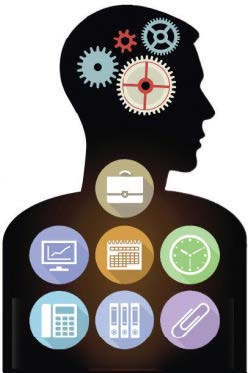Companies are starting to recognize and celebrate the need for a neurodiverse workforce. And this isn't just a hunch. Real work has been done to demonstrate the strengths of a subset of this workforce: those with I/DD and learning disabilities.

The question that pops into nearly all parents' minds at some point – what will my child's future look like – yields a wide array of aspirations… and even more questions. Some, clear as day, while others, foggy. And what if you have a child with an intellectual or developmental disability (I/DD)? What will his or her future hold? The good news is, today, it's not just Mom and Dad who are the advocates helping to carve out meaningful employment for their children. It's the future employers, too. But a little context first...
We've heard the statistics about employment among the I/DD population, and the numbers are staggering. The ARC surveyed families raising children with an I/DD for a 2010 study, and they reported only 15% of their children were employed. These data were similar to many other surveys, including the National Core Indicators (NCI) Data Brief, which highlighted the high underemployment or unemployment rates of people with an I/DD along with what type of housing they resided in (e.g., 33% of those living independently had employment vs 17% living with parents, etc.), whether they liked their jobs (92% of those working in the community said "Yes"), and the type of work they did (30% cleaning/maintenance, 18% retail, etc.). Certainly, we have the Americans with Disabilities Act (ADA), a civil rights law prohibiting discrimination based on disability in all areas of public life, as well as the U.S. Equal Employment Opportunity Commission (EEOC), which specifically enforces that employers not discriminate against qualified individuals with disabilities during interviewing, hiring, training, or firing. While these laws and groups are crucial for our employed population, how are we getting more people with I/DD into the workforce in the first place? And how are we supporting their work to facilitate their success?
Enter the word "Neurodiversity." This is still a fairly new term, Watson, Hewlett Packard Enterprise (HPE), and Ford have all examined their human resources practices to better access and accommodate neurodiverse talent." and while its definition will continue to evolve, most agree it refers to the concept that we are all wired differently. The tech industries have taken particular interest in this concept. Companies such as Microsoft, SAP, Willis Towers Watson, Hewlett Packard Enterprise (HPE), and Ford have all examined their human resources practices to better access and accommodate neurodiverse talent. Microsoft even has their own "Neurodiversity in the High Tech Workforce Conference." Companies are starting to recognize and celebrate the need for a neurodiverse workforce. And this isn't just a hunch. Real work has been done to demonstrate the strengths of a subset of this workforce: those with I/DD and learning disabilities. HPE's program has placed over 30 individuals from within this "neurodiverse subset" in roles testing software at Australia's Department of Human Services, and this subset was found to be 30% more productive than colleagues without a disability. Israel's Defense Force has a "Visual Intelligence Division," which employs many individuals with autism as image analysts and even recruits high school students for strong visual thinking and attention to detail. These are the students that would otherwise receive an exception letter from participating in the Israeli Army due to their disability.

"Companies such as Microsoft, SAP, Willis TowersWatson, Hewlett Packard Enterprise (HPE), and Ford have all examined their human resources practices to better access and accommodate neurodiverse talent."